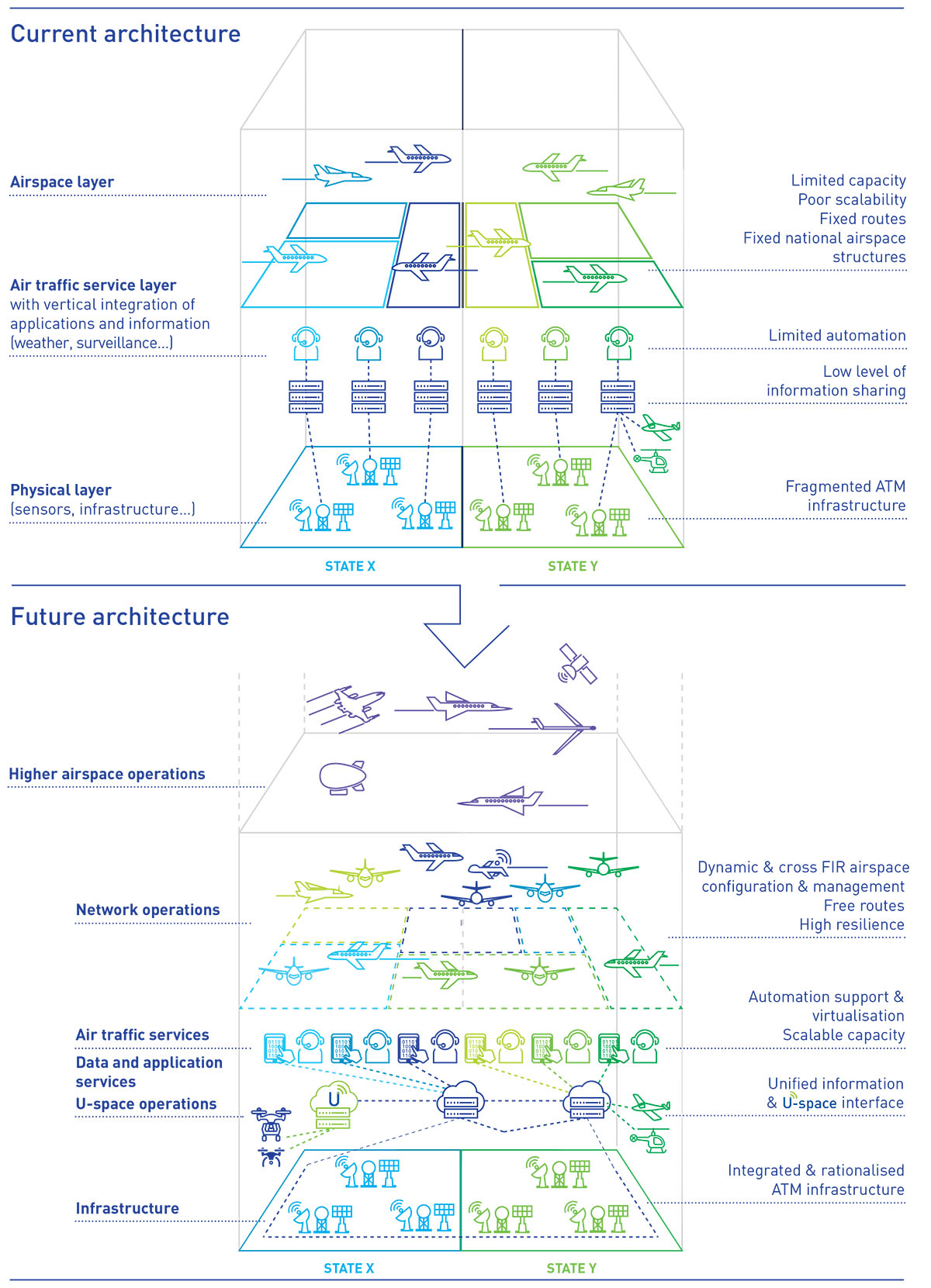Vision
Air transport has been a key driver for European integration and economic prosperity. However, an outdated aviation infrastructure means that air traffic in Europe is hitting its limits both in the air and on the ground, resulting in growing delays and unnecessary emissions. Add to that the multitude of new types of air vehicles, such as delivery drones and air taxis, that will soon be seeking access to the airspace, and the need for action becomes clear and urgent.
While an energy transition is the only way in the long term to ensure carbon neutral air transport in the future, the aviation infrastructure (air traffic management) can be modernised at a more rapid pace and bring environmental benefits in the shorter term. Advancing innovations applied today in the digital economy will result in radical transformation of Europe’s aviation infrastructure, making air transport smarter, more sustainable, connected and accessible to all.
The Digital European Sky leverages the latest digital technologies (“SESAR Solutions”) to increase the levels of automation, cyber-secure data sharing and connectivity in air traffic management, as well as to enable the virtualisation of its infrastructure and air traffic service provision in all types of airspace, including for very-low and high-altitude operations. In doing so, these technologies enable the system to become more scalable and agile, while building resilience to disruptions, changes in traffic demand and diversity of air vehicles. These attributes are all key to future proofing the system in a smart and sustainable way.
View Strategic and Research Agenda for the Digital European Sky

